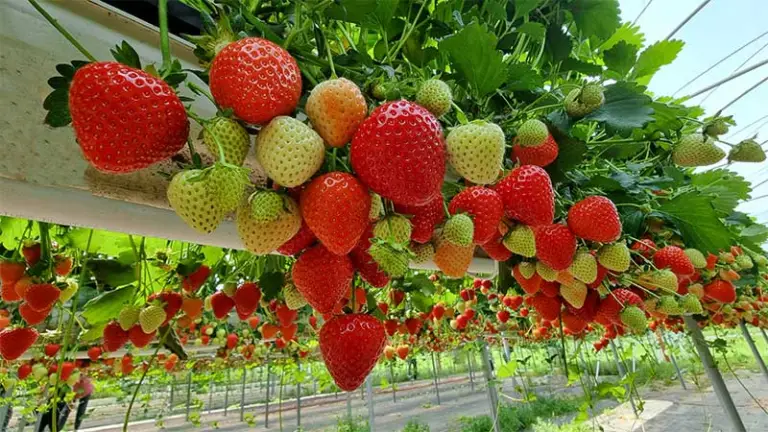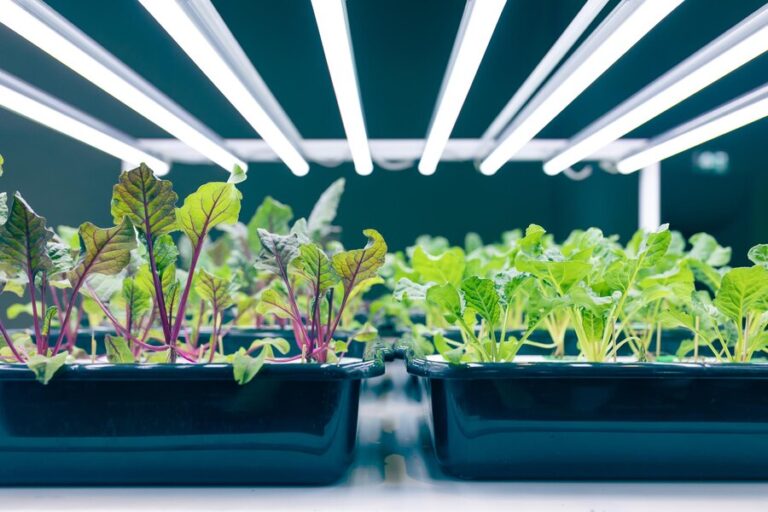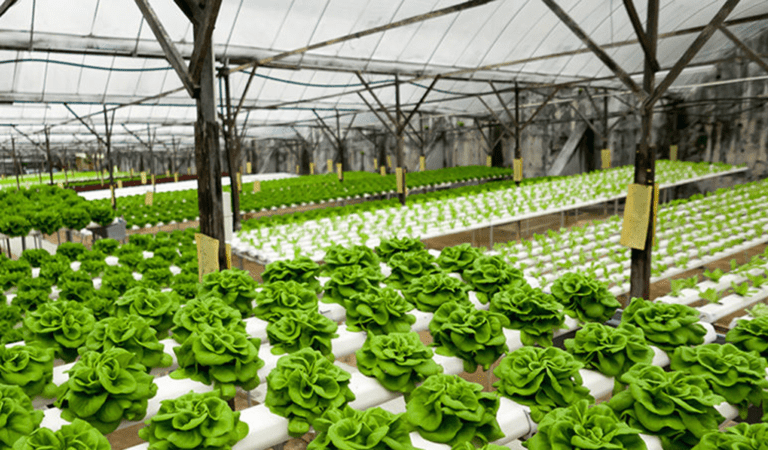Grow Room Fans 101: 10 Types You Need to Know
Table of Contents
Understanding the Importance of Air Circulation in Grow Rooms
Air circulation plays a crucial role in the success of any grow room setup. It not only helps to maintain optimal temperature and humidity levels but also ensures proper distribution of fresh air and nutrients to the plants. Without adequate air circulation, plant growth can be hindered, and the overall health and yield of the plants may suffer.
One of the main reasons why air circulation is important in grow rooms is the prevention of stagnant air. Stagnant air can create an environment favorable for the growth of mold, mildew, and pests, which can be detrimental to the plants. By improving airflow, you can reduce the chances of these issues and create a healthier environment for your plants to thrive.
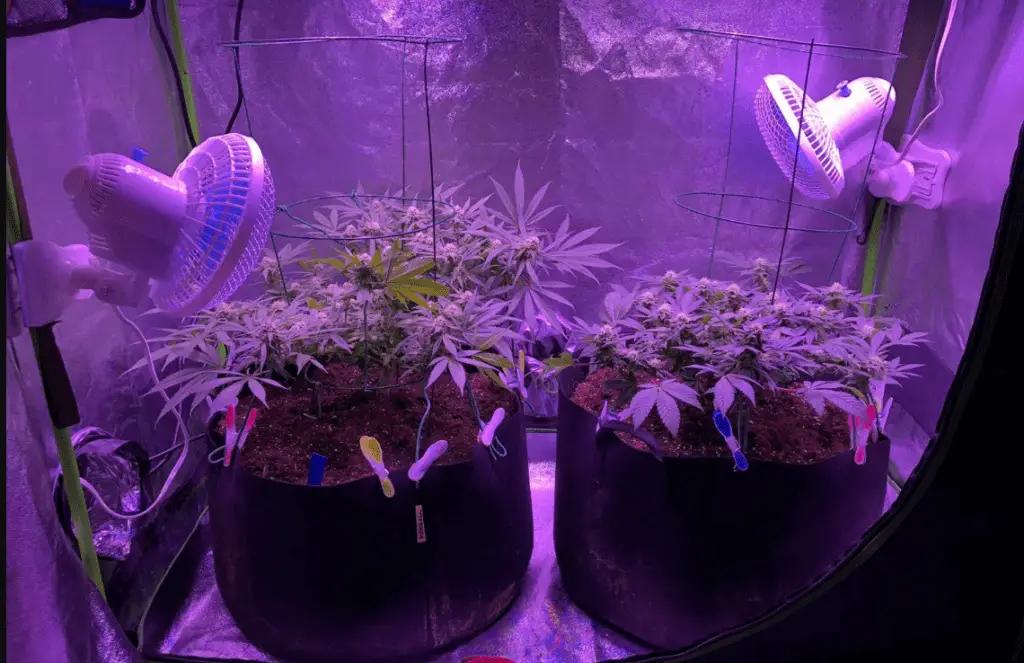
Additionally, air circulation helps in maintaining a consistent temperature and humidity throughout the grow room. Plants require specific temperature and humidity levels to grow optimally, and inadequate airflow can lead to hotspots and uneven distribution of these factors. Proper circulation ensures that the temperature and humidity reach every corner of the grow room, providing an ideal environment for plant growth.
In the next section, we will explore the role of fans in maintaining optimal temperature and humidity levels in grow rooms. From inline fans to oscillating fans, we will discuss the different types of fans available and how they contribute to enhancing air circulation in grow spaces.
The Role of Fans in Maintaining Optimal Temperature and Humidity Levels
Fans play a crucial role in maintaining optimal temperature and humidity levels in grow rooms. By enhancing air circulation, fans help to regulate these key environmental factors, creating an ideal growing environment for plants.
Temperature control is vital for successful plant cultivation, as different plant species require specific temperature ranges to thrive. Fans aid in temperature regulation by dispersing warm air and preventing hotspots, ensuring a more uniform distribution of heat throughout the grow room. This prevents potential heat stress on plants and allows for optimal growth. Conversely, in colder climates or during colder seasons, fans can help to circulate warmer air and create a more consistent temperature within the grow space.
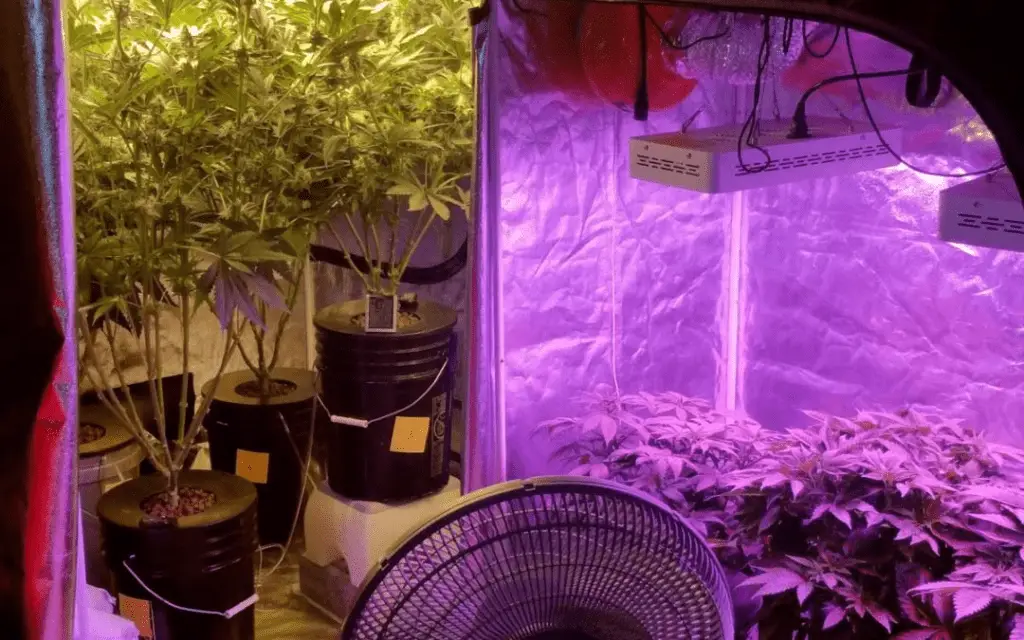
Humidity is another critical factor that fans help to manage. By circulating the air, fans improve moisture distribution, preventing stagnant and humid conditions that could lead to the growth of mold and other harmful microorganisms. Additionally, fans can assist in reducing excess moisture, thus minimizing the risk of issues such as plant diseases and pests that thrive in high humidity environments. The constant airflow provided by fans also aids in the transpiration process, allowing plants to efficiently release moisture through their leaves and maintain healthy water balance.
Inline Fans: Enhancing Airflow and Ventilation in Grow Spaces
Inline fans play a crucial role in maintaining optimal airflow and ventilation in grow spaces. These fans are specifically designed to enhance air circulation, ensuring that fresh air reaches every corner of the grow room. By strategically placing inline fans, growers can effectively combat hotspots and stagnant air, creating an environment conducive to healthy plant growth.
One of the key benefits of inline fans is their ability to push or pull air through a ventilation system. This feature allows growers to control the direction and flow of air, ensuring proper exchange and circulation. By removing stale air and replacing it with fresh air, inline fans prevent the buildup of excess heat, humidity, and carbon dioxide, all of which can negatively impact plant health.
Moreover, inline fans help in maintaining consistent temperature and humidity levels within the grow room. By facilitating the movement of air, these fans prevent pockets of stagnant air, which can lead to fluctuations in temperature and humidity. This consistency is crucial for plants’ physiological processes, such as transpiration and nutrient uptake, ensuring optimal growth and productivity.

In addition to improving air circulation, inline fans also aid in controlling odor, preventing the buildup of mold and mildew, and reducing the risk of pests and diseases. By continuously moving air, these fans create an inhospitable environment for pathogens and pests, thus safeguarding the plants’ health and maximizing yields.
Overall, inline fans are an indispensable tool for enhancing airflow and ventilation in grow spaces. Their ability to promote air circulation, maintain consistent environmental conditions, and minimize the risk of plant diseases makes them an essential component of any successful indoor gardening setup.
• Inline fans enhance air circulation and ensure fresh air reaches every corner of the grow room.
• They can push or pull air through a ventilation system, allowing growers to control direction and flow.
• By removing stale air and replacing it with fresh air, inline fans prevent excess heat, humidity, and carbon dioxide buildup.
• Inline fans help maintain consistent temperature and humidity levels within the grow room.
• Consistent environmental conditions are crucial for plants’ physiological processes like transpiration and nutrient uptake.
• Inline fans aid in controlling odor, preventing mold and mildew buildup, as well as reducing the risk of pests and diseases.
• Continuous airflow created by inline fans creates an inhospitable environment for pathogens and pests.
• Overall, inline fans are essential for enhancing airflow, maintaining optimal environmental conditions, and maximizing yields in indoor gardening setups.
Oscillating Fans: Promoting Even Distribution of Air and Reducing Hotspots
Oscillating fans are an essential tool in maintaining optimal conditions within grow spaces by promoting even distribution of air and reducing hotspots. These fans are designed to rotate back and forth, covering a wider area than stationary fans, ensuring that air reaches every corner of the room.
| Feature | Description |
|---|---|
| Oscillating Movement | Rotates horizontally, ensuring a wider coverage area, distributing air evenly across the room. |
| Enhanced Air Circulation | Prevents stagnant air by continuously moving and circulating it, reducing the likelihood of hotspots. |
| Temperature Regulation | Helps maintain a consistent temperature throughout the room, minimizing variations and discomfort. |
| Hotspot Reduction | Breaks up pockets of warm air, reducing hotspots commonly found in stagnant areas of a room. |
| Improved Comfort | Provides a more comfortable and pleasant environment by preventing uneven temperature distribution. |
| Energy Efficiency | Allows for effective cooling at lower fan speeds, potentially reducing the need for air conditioning. |
| Adjustable Settings | Customizable speed settings and tilt options provide flexibility in directing airflow as needed. |
One of the key benefits of oscillating fans is their ability to prevent hotspots from forming within the grow room. Hotspots occur when certain areas receive more airflow than others, leading to inconsistent temperature and humidity levels. By constantly moving the air in a sweeping motion, oscillating fans help to break up stagnant pockets of warm air and distribute it evenly throughout the space. This creates a more uniform and stable environment for plants, preventing localized heat stress and promoting healthy growth.
Floor Fans: Aiding in Air Circulation on the Ground Level
Floor fans play a crucial role in the efficient air circulation within grow spaces, especially at the ground level. By aiding in the movement of air near the floor, these fans help maintain a balanced and optimized environment for plant growth.
One of the key benefits of floor fans is their ability to effectively distribute airflow across the lower parts of the grow room. This is particularly important as stagnant air near the ground can create pockets of high humidity, trapping moisture and increasing the risk of fungal growth. By continuously moving the air, floor fans contribute to reducing the chances of fungal infestations and other potential issues associated with poor air circulation. Additionally, by promoting better airflow, floor fans also assist in maintaining consistent temperature levels across the entire grow space, preventing hotspots and cold spots that could hinder plant growth.
To maximize their effectiveness, it is essential to strategically place floor fans in locations that ensure thorough coverage of the ground level. By positioning them in areas with limited natural air movement, such as corners or spaces behind larger plants, floor fans can enhance the overall distribution of fresh air throughout the grow room. As a result, plants at the lower levels can receive the necessary air exchange, oxygen, and CO2 they require for healthy growth and development.

In conclusion, floor fans are valuable tools for maintaining proper air circulation and ventilation on the ground level of grow rooms. By improving airflow and preventing stagnant conditions, these fans contribute to the overall health and vitality of plants. Whether used in conjunction with other types of fans or as standalone solutions, floor fans are an indispensable component of any successful indoor gardening setup.
Wall-Mounted Fans: Optimizing Space and Providing Directional Airflow
Wall-mounted fans are an essential component in any grow room setup, offering a space-saving solution while optimizing air circulation and providing directional airflow. These fans are strategically mounted on walls, allowing for efficient air movement without occupying valuable floor space. By directing airflow in a specific direction, wall-mounted fans help maintain consistent temperature and humidity levels throughout the grow space.
One of the key advantages of wall-mounted fans is their ability to provide targeted airflow. By directing air towards specific areas within the grow room, these fans help prevent stagnant air pockets and ensure even distribution of fresh air. This is crucial for plants, as adequate airflow helps in the exchange of gases, promotes healthy transpiration, and prevents the formation of mold and mildew. Furthermore, the directed airflow can help to reduce the occurrence of hotspots, which may negatively impact plant growth and development.
In addition to optimizing space and providing directional airflow, wall-mounted fans are often designed with adjustable settings, allowing growers to customize the flow of air to their specific needs. With adjustable speed settings, growers can fine-tune the fan’s performance to create the ideal environment for their plants. Moreover, some wall-mounted fans come with oscillation features that enable the fan head to rotate, further enhancing the distribution of airflow.
In conclusion, wall-mounted fans play a vital role in optimizing air circulation within a grow room, especially when space is limited. With their ability to provide directional airflow and adjustable settings, these fans contribute to maintaining optimal temperature and humidity levels, promoting healthy plant growth, and preventing the buildup of stagnant air. Whether you are a seasoned gardener or a beginner, incorporating wall-mounted fans into your grow room setup can significantly enhance your cultivation success.
Ceiling Fans: Assisting in Heat Distribution and Cooling
Ceiling fans play a crucial role in maintaining optimal growing conditions within your grow room or greenhouse. These fans are not only effective in heat distribution but also provide much-needed cooling for your plants. By effectively circulating the air, ceiling fans help to regulate temperature and humidity levels, creating a more favorable environment for plant cultivation.
One of the key benefits of ceiling fans is their ability to assist in heat distribution. As warm air rises, it tends to accumulate near the ceiling, leaving the lower levels of the grow room relatively cooler. This temperature difference can negatively impact plant growth and development. However, with the help of ceiling fans, the hot air is circulated downwards, ensuring a more uniform temperature throughout the space. This even distribution of heat allows plants to thrive without experiencing stress from extreme temperature variations.
Additionally, ceiling fans provide the much-needed cooling effect for your plants. Excessive heat can be detrimental to plant health, leading to wilting, nutrient deficiencies, and even plant death. By circulating the air and creating a gentle breeze, ceiling fans help to dissipate excess heat and maintain a comfortable environment for your plants. The airflow also aids in reducing the risk of fungal diseases, as stagnant air can create conditions favorable for their growth. With ceiling fans in place, you can have peace of mind knowing that your plants are receiving adequate air circulation and remaining cool, promoting healthy and robust growth.
Clip-On Fans: Effective Solution for Small Grow Spaces and Tight Budgets
Clip-on fans are an essential tool for small grow spaces and tight budgets. These compact fans are designed to be easily attached to various surfaces, making them incredibly versatile and convenient for growers with limited space. Despite their small size, clip-on fans are highly effective in promoting airflow and preventing stagnant air, which can lead to mold and other plant health issues.
In addition to their space-saving benefits, clip-on fans are also a cost-effective solution for growers on a tight budget. With their affordable price tags, these fans provide an accessible option for those who want to enhance air circulation in their grow rooms without breaking the bank. By investing in clip-on fans, growers can enjoy the advantages of improved air movement, increased oxygen levels, and better temperature regulation, all while being mindful of their financial constraints.
Tower Fans: Combining Space-Efficiency and Widespread Airflow
Tower fans are a popular choice for growers seeking to combine space-efficiency with widespread airflow in their grow rooms. These sleek and slender fans are designed to fit into tight spaces while still providing exceptional air circulation throughout the entire room.
One of the key advantages of tower fans is their ability to distribute air in a horizontal motion, creating a continuous flow from one end of the room to the other. This helps to eliminate stagnant air pockets and reduce the risk of hotspots, ensuring a more even temperature and humidity distribution. With their oscillating feature, tower fans can also cover a larger area compared to other types of fans, making them ideal for medium to large grow spaces.
| Feature | Tower Fans |
|---|---|
| Design | Slim, vertical profile |
| Space-Efficiency | Takes up minimal floor space |
| Airflow Direction | Oscillates for widespread airflow |
| Energy Efficiency | Generally energy-efficient |
| Cooling Performance | Effective in smaller rooms |
| Portability | Lightweight and easy to move |
| Noise Level | Typically quieter operation |
| Additional Features | Remote control, multiple speed settings |
| Aesthetics | Modern and sleek design |
| Versatility | Suitable for various settings |
| Maintenance | Easy to clean with removable filters |
Tower fans are also known for their versatility. They often come with adjustable fan speeds and various modes, allowing growers to customize the airflow according to their specific needs. Additionally, many tower fans feature built-in timers and remote controls, providing convenient access and effortless adjustment. These features make tower fans a practical solution for gardeners looking for efficient and low-maintenance airflow management in their grow rooms.
Box Fans: Versatile Option for Controlling Temperature and Humidity
Box fans are a versatile option for controlling temperature and humidity levels in grow rooms. With their powerful airflow and adjustable settings, these fans provide effective ventilation and circulation, helping to create an optimal growing environment for plants.
One of the key benefits of using box fans is their ability to regulate temperature. By drawing in fresh air and expelling stale air, these fans help to maintain a consistent temperature in the grow room. This is especially important during hot summer months when heat can build up and cause stress to plants. With the use of box fans, growers can ensure that the temperature remains within the ideal range, promoting healthy growth and preventing heat-related issues such as wilting or scorched leaves.
In addition to temperature control, box fans also play a crucial role in managing humidity levels. Excessive humidity can encourage the growth of mold and mildew, which can be detrimental to plants. By improving air circulation, box fans help to reduce moisture buildup in the grow room, preventing the onset of these issues. Growers can adjust the fan speed and direction to effectively disperse humidity, creating a well-balanced environment that promotes optimal plant growth.
Overall, box fans are a valuable tool in any grow room setup. Their versatility in controlling both temperature and humidity levels makes them a popular choice among garden enthusiasts. By providing efficient airflow and ventilation, these fans contribute to the overall success and health of a garden, ensuring that plants receive the proper conditions for thriving.
Exhaust Fans: Removing Stale Air and Maintaining Freshness
Exhaust fans play a crucial role in the maintenance of air quality and freshness in grow rooms. These fans are designed to remove stale air and odors, ensuring a clean and healthy environment for plants to thrive. By effectively expelling stagnant air, exhaust fans help to prevent the buildup of excess humidity, mold, and other harmful pollutants that can hinder the growth and development of plants.
In addition to eliminating stale air, exhaust fans also facilitate proper air circulation within the grow room. This is essential for ensuring that plants receive an adequate supply of oxygen, as well as evenly distributing temperature and humidity levels. By continually exchanging indoor air with fresh air from outside, these fans create a dynamic and balanced environment that promotes optimal plant growth. With the ability to effectively remove stale air and maintain freshness, exhaust fans are an essential component of any well-ventilated grow room.
Intake Fans: Bringing in Fresh Air and Ensuring Sufficient Oxygen Levels
Intake fans play a crucial role in indoor grow rooms by bringing in fresh air and ensuring a sufficient supply of oxygen for your plants. As plants grow and photosynthesize, they take in carbon dioxide and release oxygen. Without proper air circulation, the levels of carbon dioxide can accumulate, leading to a decrease in oxygen levels and hindering plant growth.
By strategically placing intake fans in your grow room, you can maintain a constant flow of fresh air, replenishing the oxygen supply and removing stagnant air. This circulation of air also helps in dissipating heat and preventing the buildup of humidity, which in turn reduces the risk of mold or mildew formation. Intake fans effectively prevent the staleness that can occur in enclosed spaces and create a healthier environment for your plants to thrive.
To maximize their benefits, it is essential to position intake fans at a lower level in the grow room. This placement allows them to draw in cooler air from outside, which can help regulate the overall temperature and humidity levels. Additionally, it is advisable to use carbon filters in conjunction with intake fans to remove any potential contaminants or odors from the incoming air, ensuring the introduction of clean and fresh air into your grow space.
Overall, intake fans are an indispensable component of a well-ventilated grow room. By bringing in fresh air and ensuring sufficient oxygen levels, they contribute to the overall health and development of your plants, promoting vigorous growth and optimizing their yield potential.
Duct Fans: Facilitating Airflow through Ventilation Systems
Duct fans play a vital role in facilitating airflow through ventilation systems, ensuring proper air circulation within grow rooms. By effectively removing stale air and bringing in fresh air, these fans contribute to the overall health and productivity of plants.
One of the key benefits of using duct fans is their ability to maintain optimal temperature and humidity levels. By pulling out hot air and bringing in cooler air, these fans help regulate the grow room’s climate, preventing overheating and reducing the risk of mold or mildew growth. Additionally, duct fans help distribute fresh air evenly throughout the space, ensuring that every corner of the grow room receives sufficient airflow, nutrients, and oxygen.
| Feature | Description |
|---|---|
| Type | Inline Duct Fan, Axial Duct Fan, Centrifugal Duct Fan |
| Functionality | Facilitates airflow through ventilation ducts |
| Installation | Can be installed in-line with ductwork or at the end |
| Airflow Capacity | Varies based on fan type and size |
| Energy Efficiency | High-efficiency models available, reducing power consumption |
| Noise Level | Quiet operation for some models, important for indoor use |
| Speed Control | Adjustable speed settings for customized airflow |
| Usage | Residential HVAC, commercial buildings, industrial spaces |
| Maintenance | Regular cleaning and inspection required for optimal performance |
| Size and Dimensions | Different sizes available to fit various duct diameters |
| Material | Typically made of durable materials for longevity |
| Smart Features | Some models come with smart controls and automation |
High-Velocity Fans: Powerful Solution for Large Grow Rooms and Commercial Setups
High-velocity fans are an essential tool for maintaining optimal airflow in large grow rooms and commercial setups. These powerful fans are designed to circulate air efficiently over a significant distance, ensuring consistent air movement throughout the space. By providing high airflow rates, these fans help to control temperature, humidity, and CO2 levels, creating an ideal environment for plant growth.
One of the major advantages of high-velocity fans is their ability to cover a wide area, making them suitable for larger grow rooms. With their robust motors and aerodynamic design, these fans can move a substantial volume of air, reaching even the furthest corners of the space. This effective air circulation helps prevent the formation of stagnant pockets, which can lead to the development of mold, pests, and diseases. Additionally, high-velocity fans contribute to the even distribution of heat, reducing temperature variations and creating a more consistent climate across the entire room.
In commercial setups, where multiple grow rooms or sections may exist, high-velocity fans can be strategically placed to create airflow patterns that optimize plant health. By directing air movement towards the canopy or specific areas of interest, these fans can enhance transpiration rates, nutrient absorption, and overall plant vitality. Moreover, the increased air circulation provided by high-velocity fans supports the strengthening of plant stems and branches, reducing the risk of lodging and improving overall plant structure. With their powerful performance and ability to cover large areas, high-velocity fans offer a reliable solution for growers with larger-scale operations.
Energy-Efficient Fans: Min
Energy-efficient fans are a valuable addition to any grow room or gardening setup. With their ability to minimize energy consumption while still providing effective air circulation, these fans offer a sustainable solution for maintaining optimal temperature and humidity levels. By reducing electricity usage, energy-efficient fans not only contribute to a greener environment but also help gardeners save on energy costs in the long run.
In addition to their energy-saving benefits, energy-efficient fans are also designed to deliver high performance. Equipped with advanced motor technology and aerodynamic blades, these fans can generate powerful airflow while operating at lower energy consumption levels. This means that gardeners can enjoy the benefits of efficient air circulation without sacrificing performance or productivity. Whether you are looking to cool the space, distribute air evenly, or remove stagnant air, energy-efficient fans are a reliable and eco-friendly choice for any grow room or gardening setup.
What is the importance of air circulation in grow rooms?
Air circulation in grow rooms is crucial as it helps to maintain a consistent temperature and humidity levels, prevents the formation of hotspots, and promotes the distribution of fresh air and CO2 to the plants.
How do fans contribute to maintaining optimal temperature and humidity levels in grow rooms?
Fans help to regulate temperature and humidity levels in grow rooms by promoting air movement. They can help to cool down the room by circulating air and can also aid in preventing excess moisture buildup by increasing evaporation.
What are inline fans and how do they enhance airflow and ventilation in grow spaces?
Inline fans are fans that are installed within the ducting system of a grow room. They help to increase airflow by drawing air through the ventilation system, removing stale air, and bringing in fresh air from outside. This ensures proper air exchange and ventilation in the grow space.
How do oscillating fans promote even distribution of air and reduce hotspots?
Oscillating fans are designed to move back and forth, covering a wider area. In grow rooms, they help to distribute air more evenly, preventing stagnant air pockets and reducing the formation of hotspots. This ensures that all plants receive sufficient airflow and nutrients.
How do floor fans aid in air circulation on the ground level?
Floor fans are placed on the ground and help to improve air circulation in the lower area of the grow room. They can help to distribute cool air and prevent the accumulation of stagnant air near the floor, ensuring that the plants receive adequate ventilation and nutrients.
How do wall-mounted fans optimize space and provide directional airflow in grow rooms?
Wall-mounted fans are installed on the walls of grow rooms, which saves valuable floor space. They can be angled to provide directional airflow, ensuring that air reaches different parts of the room and plants. This helps to prevent the formation of hotspots and promotes even air distribution.
How do ceiling fans assist in heat distribution and cooling in grow rooms?
Ceiling fans are effective in circulating air throughout the grow room. By pushing warm air down and creating a breeze, they help to distribute heat more evenly, preventing it from accumulating near the ceiling. This assists in maintaining a consistent temperature and cooling down the grow room.
Are clip-on fans an effective solution for small grow spaces and tight budgets?
Yes, clip-on fans are a cost-effective solution for small grow spaces and tight budgets. They can be easily attached to various surfaces, such as poles or shelves, without requiring additional floor or wall space. They provide localized airflow and are suitable for targeted cooling in specific areas.
What are tower fans and how do they combine space-efficiency and widespread airflow?
Tower fans are tall and slender fans that take up minimal floor space. They are designed to provide widespread airflow, distributing air evenly across the grow room. Their vertical design allows for efficient air circulation without occupying much space, making them ideal for areas with limited floor space.
How can box fans be used to control temperature and humidity in grow rooms?
Box fans are versatile fans that can be used to control temperature and humidity in grow rooms. They can be used to pull in fresh air, cool down the room, and remove excess humidity. Additionally, box fans can also be used in conjunction with other ventilation systems to maintain the desired environment for plant growth.
What is the role of exhaust fans in a grow room?
Exhaust fans play a vital role in a grow room by removing stale air, excess heat, and odors. They help to maintain freshness and prevent the accumulation of potentially harmful gases. By expelling air from the grow room, exhaust fans facilitate air exchange and maintain a healthy environment for the plants.
How do intake fans bring in fresh air and ensure sufficient oxygen levels in grow rooms?
Intake fans are responsible for drawing in fresh air from outside the grow room. They help to maintain proper ventilation by ensuring a continuous supply of fresh air and sufficient oxygen levels for the plants. By bringing in new air, intake fans contribute to a healthier and more optimal grow environment.
How do duct fans facilitate airflow through ventilation systems?
Duct fans are fans specifically designed to be installed within the ventilation ducting system. They help to facilitate airflow by pushing or pulling air through the ducts, ensuring proper air circulation throughout the grow room. Duct fans are essential for maintaining efficient ventilation and air exchange.
Are high-velocity fans a suitable solution for large grow rooms and commercial setups?
Yes, high-velocity fans are a powerful solution for large grow rooms and commercial setups. They are capable of moving a significant amount of air, ensuring proper airflow and ventilation in larger spaces. Their high-speed operation allows for effective air circulation, reducing hotspots and providing an optimal environment for plant growth.
How do energy-efficient fans minimize energy consumption in grow rooms?
Energy-efficient fans are designed to consume less electrical power while providing sufficient airflow. They utilize advanced motor technology, efficient blade designs, and energy-saving features to reduce energy consumption. By using energy-efficient fans, growers can minimize their electricity usage and lower their overall operational costs.

Pallavi Gupta is a burgeoning writer at SouthElMonteHydroponics, blending her passion for data analysis with a keen interest in biotechnology. Currently pursuing a Bachelor’s in Biotechnology at Amity University, Pallavi delves into the intricacies of life sciences while gaining hands-on experience in the exciting world of data analysis. Her unique background provides a fresh perspective on hydroponic farming, as she explores the intersection of biotechnology and sustainable agriculture. Through her writing, Pallavi aims to bridge the gap between data-driven insights and innovative farming practices, inspiring others to harness technology for a greener future.

